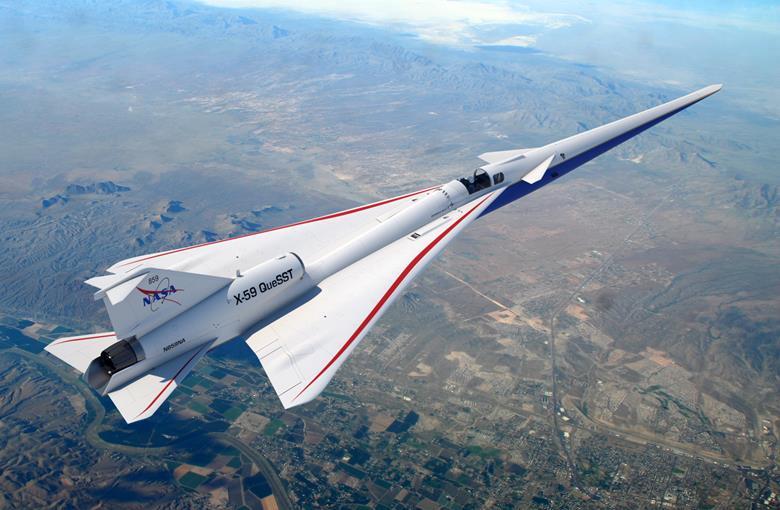Engineers had been working on the jet X-59 since 2019 and now it has almost achieved the outlook of a fully functional jet and NASA could not be prouder. Timelapse footage has been released to display “the major aircraft sections” of NASA’s X-59 Quiet SuperSonic Technology (QueSST) aircraft. It is published in a blog post from NASA.
The vehicle is being developed at the Lockheed Martin Skunk Works in Palmdale, California. Once the project is completed, it will be able to reach the speed of Mach 1.4, which is 925 mph. The aircraft has a long nose of 30 feet that will streamline and cut through the air. This is done so the jet will have a minimum sound of the sonic boom when it leaves the speed of sound behind that is 767 mph. This will allow the aircraft to reach a high speed right after taking off. On the other hand, the Concorde had to be kept on low speed while crossing the areas with a high population because of its loud sonic boom.
The contract is given to Lockheed Martin by NASA for $247.5 million. The deadline for completing the work on the aircraft is in this year and the test flight will be scheduled for 2022. According to Inceptive Mind, the aircraft will be 94 feet in length with a wingspan of 29.5 feet. The maximum weight it will be able to handle is 14,700 kg and the maximum speed will be 990 mph.
Jay Brandon, NASA chief engineer for the Low Boom Flight Demonstrator (LBFD) project states that the project is steering close to the goal of making X-59 in an entirely functional jet. The whole process was sped up by the astute use of features and pre-drilled, full-size fastener holes. Laser trackers were used before securing the pieces together permanently so there are no engineering faults. By virtue of this, the company has landed another contract of $3 billion by United Airlines to go carbon-free. The X-59 jet is being called the “Son of Concorde” now and its arrival is pleasantly awaited.

